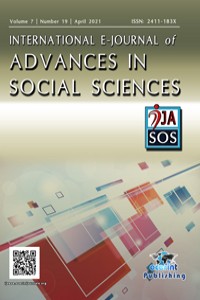Abstract
References
- Y. K. Babansky, T. A. Ilyina, N. A. Sorokin (1983). Pedagogics, p. 608.
- I. P. Volkov (1990). There is one goal -there are many roads, p.160.
- M. A. Choshanov (1996). Flexible technology of problem-based modular training, p.160.
TEACHING LINEAR ALGEBRA TO STUDENTS OF ECONOMIC AND TECHNICAL SPECIALTIES: SIMILARITIES AND DIFFERENCES
Abstract
Currently, training of students of any specialty at the university implies the formation of professional competencies. "Linear algebra" is given particular place in this process. After studying this subject students should be able to use the acquired fundamental knowledge in their future professional activities. In addition, students should have the ability to determine general forms and patterns in linear algebra issues. An important role in the process of training specialists is played by the ability to mathematically correctly set science or economic problems, for this it is necessary to have a good understanding of the statements of classical mathematical problems in general. With a high-quality assimilation of the material and a sufficiently good ability to apply it in the required situation, students of technical specialties can plan and carry out pedagogical activities in the future, taking into account the specifics of the subject area in educational organizations. After studying at the university, specialists should be focused on both theoretical and applied activities. The increased requirements for the quality of graduate training are applied to both economic and technical specialties. In this regard, the modular approach to teaching the subject is gaining weight. The ability to develop modules of the same subject that are different in content and complexity for different specialties is of key importance in the training of technical and economic students. Students can immediately work out the practical application of the studied material on examples from their particular specialty, paying sufficient attention to the analysis of various specific nuances without spending too much time on analyzing general examples. The article deals with the issues related to teaching of "Linear algebra" to students of economic and technical specialties of the Chuvash State University, the similarities and differences in the presentation of the material. The main focus is on modern approaches in teaching the discipline and modular approach as well.
Keywords
linear algebra formal approach active approach economic specialties technical specialties professional competencies modular training
References
- Y. K. Babansky, T. A. Ilyina, N. A. Sorokin (1983). Pedagogics, p. 608.
- I. P. Volkov (1990). There is one goal -there are many roads, p.160.
- M. A. Choshanov (1996). Flexible technology of problem-based modular training, p.160.
Details
| Primary Language | English |
|---|---|
| Journal Section | Makaleler |
| Authors | |
| Publication Date | May 7, 2021 |
| Submission Date | February 2, 2021 |
| Published in Issue | Year 2021Volume: 7 Issue: 19 |
Contact: ijasosjournal@hotmail.com
The IJASOS Journal's site and its metadata are licensed under CC BY
Published and Sponsored by OCERINT International © 2015- 2025


